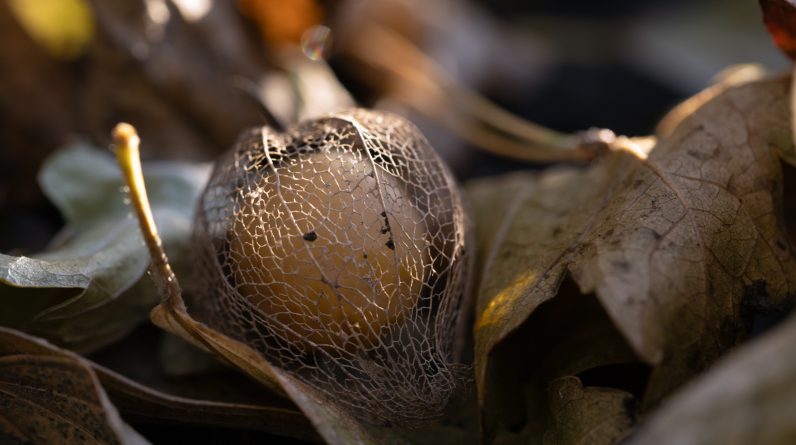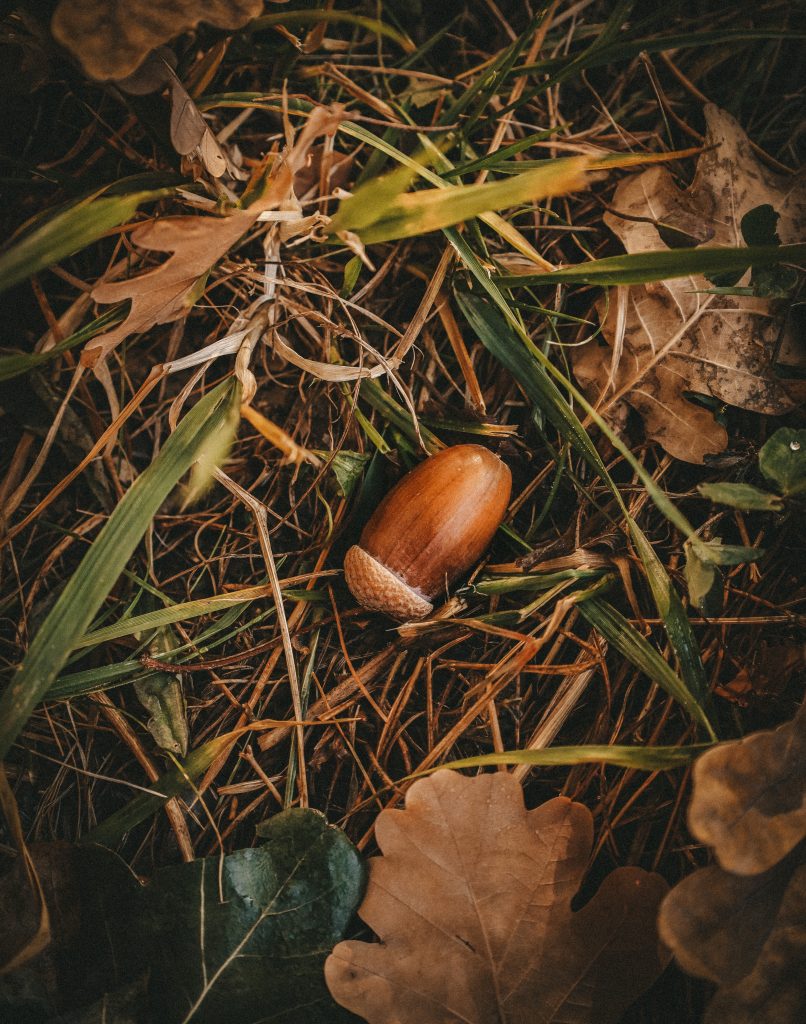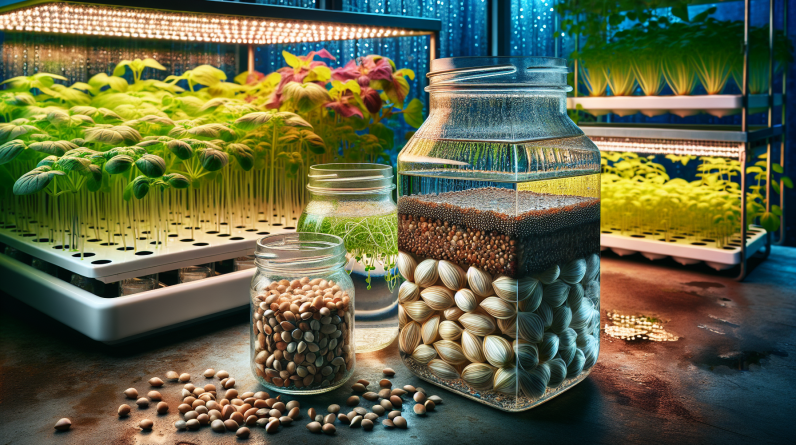
So you’ve decided to venture into the world of hydroponics, growing plants without soil, but you’re unsure about one crucial step: soaking the seeds. Is it necessary? Well, let’s shed some light on this matter. When it comes to hydroponics, the answer isn’t as straightforward as a simple yes or no. It depends on the type of seed you’re working with and your desired outcome. In this article, we’ll explore the reasons behind soaking seeds for hydroponics and whether or not it’s a step you should consider. So grab a seat, fellow green thumbs, and let’s unlock the secrets to successful hydroponic seed cultivation!
Soaking Seeds for Hydroponics
What is Hydroponics?
Hydroponics is a method of growing plants without soil. Instead, nutrient-rich water is used to support plant growth. This innovative technique allows plants to thrive in a controlled environment, providing them with all the necessary nutrients they need to flourish.
Purpose of Soaking Seeds for Hydroponics
Soaking seeds before planting them in a hydroponic system is a crucial step that can greatly enhance the success and yield of your crops. This process helps to enhance germination, promote early growth, and activate seed enzymes, ensuring that your plants get off to a healthy start.

This image is property of images.unsplash.com.
Benefits of Soaking Seeds for Hydroponics
There are several benefits to soaking seeds for hydroponics:
Faster Germination
Soaking seeds in water before planting can help to soften the seed coat, allowing for faster and more efficient germination. This means you’ll see sprouts emerging from your seeds more quickly, leading to earlier growth and development.
Improved Seedling Vigor
Soaking seeds helps to kickstart the growth process, giving your seedlings a head start. The increased moisture and warmth from soaking will encourage stronger root development, resulting in more robust and resilient plants.
Increased Nutrient Absorption
Soaking seeds can activate enzymes within the seed, allowing for better absorption of nutrients once they are placed in the hydroponic system. This means your plants will be able to take in and utilize the available nutrients more effectively, leading to healthier and more productive growth.
Better Disease Resistance
Soaking seeds can also help to eliminate any potential pathogens present on the seed coat. By immersing them in water, you can wash away any harmful bacteria or fungi that may hinder seed germination and plant growth. This can improve overall disease resistance and reduce the risk of plant health issues.
Choosing the Right Seeds for Hydroponics
When selecting seeds for hydroponics, it’s essential to choose ones that are well-suited for this growing method. Here are some things to consider:
Importance of Seed Quality
Choose high-quality seeds from reputable suppliers. These seeds are more likely to have higher germination rates and overall better performance in hydroponic systems. Investing in quality seeds can contribute to the success of your hydroponic gardening endeavors.
Suitable Seed Varieties for Hydroponics
Certain plant varieties are more suitable for hydroponic systems than others. Look for compact or short-statured varieties that will fit well within the vertical space of your hydroponic setup. Additionally, consider plants that are known for their high yields and adaptability to soilless growing methods.
Considering Germination Requirements
Some seeds may require specific conditions for successful germination. Pay attention to the specific germination requirements of each seed variety. For example, some seeds may benefit from scarification or cold stratification before soaking to break dormancy and promote germination.

This image is property of images.unsplash.com.
Soaking Seeds: Step-by-Step Guide
Here is a step-by-step guide for soaking seeds for hydroponics:
Seed Selection
Choose the seeds you wish to soak, ensuring they are well-suited for hydroponics and have good germination rates. Follow the recommendations mentioned earlier in the article for selecting the right seeds for hydroponics.
Preparation of Soaking Solution
Fill a clean container with room temperature water. For some seeds, you can also add a mild nutrient solution or beneficial microorganisms to boost seedling growth. Avoid using tap water as it may contain high chlorine levels that could inhibit seed germination. Instead, use distilled or filtered water for best results.
Soaking Container
Place the selected seeds into the container with the soaking solution. Ensure that the seeds are fully submerged and not overcrowded. A smaller container may be suitable for smaller seed quantities, while larger quantities may require a larger vessel.
Soaking Duration
The duration for soaking seeds can vary depending on the seed variety. Refer to the recommended soaking times for different seeds, which will be outlined later in this article. It is important not to exceed the recommended soaking times, as this could hinder germination.
Rinsing Seeds After Soaking
After the recommended soaking time has elapsed, drain the soaking solution and rinse the seeds thoroughly with clean water. This step helps to remove any excess nutrients or compounds that may have accumulated during the soaking process.
Recommended Soaking Times for Different Seeds
Different seeds may require varying soaking times to achieve optimal germination. Here is a general guideline for recommended soaking times:
Seeds Requiring Longer Soaking
Certain seeds, such as legumes (beans, peas), may benefit from longer soaking periods of around 8-12 hours. This extended duration helps to soften the seed coat and promote faster germination.
Seeds Requiring Shorter Soaking
Other seeds, like lettuce or herbs, may only require a short soaking period of 1-2 hours. These seeds have thinner seed coats that don’t require as much time to soften before germination.
Adjusting Soaking Times Based on Environmental Factors
While the recommended soaking times are a good starting point, it’s important to note that environmental factors can also influence the germination process. Factors such as temperature and humidity can impact germination rates and seedling development. Keep these environmental conditions in mind and adjust soaking times accordingly.

This image is property of images.unsplash.com.
Alternatives to Soaking Seeds
While soaking seeds is a common practice in hydroponics, there are alternative methods that can also be employed to promote germination:
Scarification
Some seeds have hard seed coats that can inhibit germination. Scarification involves manually nicking or scratching the seed coat to allow for better water absorption. This process can be done using sandpaper, a file, or even a knife. However, be cautious when using sharp objects to avoid damaging the seed.
Cold Stratification
Cold stratification can be beneficial for certain seeds that require exposure to cold temperatures to break dormancy and stimulate germination. This method involves placing seeds in a moist environment at a specific temperature range, typically in a refrigerator, for a set period of time.
Pre-germination
Pre-germination involves starting the germination process in a damp environment, such as a paper towel or peat pellet, before transferring the germinated seeds to the hydroponic system. This method allows for better control over the germination process and ensures that seeds with low viability or poor germination rates are not wasted.
Common Mistakes to Avoid
To ensure successful germination and healthy plant growth, it’s important to avoid these common mistakes:
Over-Soaking Seeds
Leaving seeds to soak for too long can lead to overexposure to water, causing them to become waterlogged and prone to rot. Follow the recommended soaking times and avoid leaving seeds soaking for longer than necessary.
Using Unsuitable Soaking Solutions
Avoid using tap water containing high levels of chlorine or other harsh chemicals. These chemicals can hinder seed germination and negatively impact plant growth. Opt for distilled or filtered water for the best results. Additionally, using a nutrient solution that is too concentrated can also be harmful to the seeds.
Neglecting Environmental Conditions
Environmental factors such as temperature, humidity, and light play a pivotal role in seed germination and seedling development. Ensure that the hydroponic system provides the optimal conditions for growth. Monitoring and maintaining appropriate environmental factors will greatly increase the chances of successful germination.
Skipping Rinsing Step
After soaking seeds, it is crucial to rinse them thoroughly to remove any residual compounds or excess nutrients. Skipping this step may lead to nutrient imbalances in the hydroponic system and hinder plant growth.

Monitoring Germination and Progress
Once seeds have been soaked and transferred to the hydroponic system, it’s important to closely monitor their germination and progress. Regularly check the viability of seeds, observe seedling development, and maintain appropriate nutrient levels and environmental conditions to ensure optimal growth.
Conclusion
Soaking seeds for hydroponics is a beneficial practice that aids in enhancing germination, promoting early growth, and activating seed enzymes. By following the recommended soaking times and avoiding common mistakes, you can maximize the success and yield of your hydroponic crops. Remember, hydroponics offers endless opportunities for experimentation and learning, so continue to explore and refine your growing techniques for the best results. Happy gardening!

Related Content
- Mastering pH Levels in Your Hydroponic Garden
- iDOO Indoor Garden Hydroponics Growing System 12Pods WiFi Smart Garden Plant Germination Kit with LED Grow Light Review
- 10 Effective Hydroponic Seed Starting Tips (2025 Guide) to Boost Success
- A Beginner’s Guide to Hydroponic Gardening
- Ensure Success with Proper Hydroponic Water Quality Management







